Closed loophole confirms the unreality of the quantum world
- Transfer
After opening a loophole in the famous experiment, which proved the absence of internal properties of quantum objects, three groups of experimenters quickly closed it. This episode closes the question on theories of hidden variables.
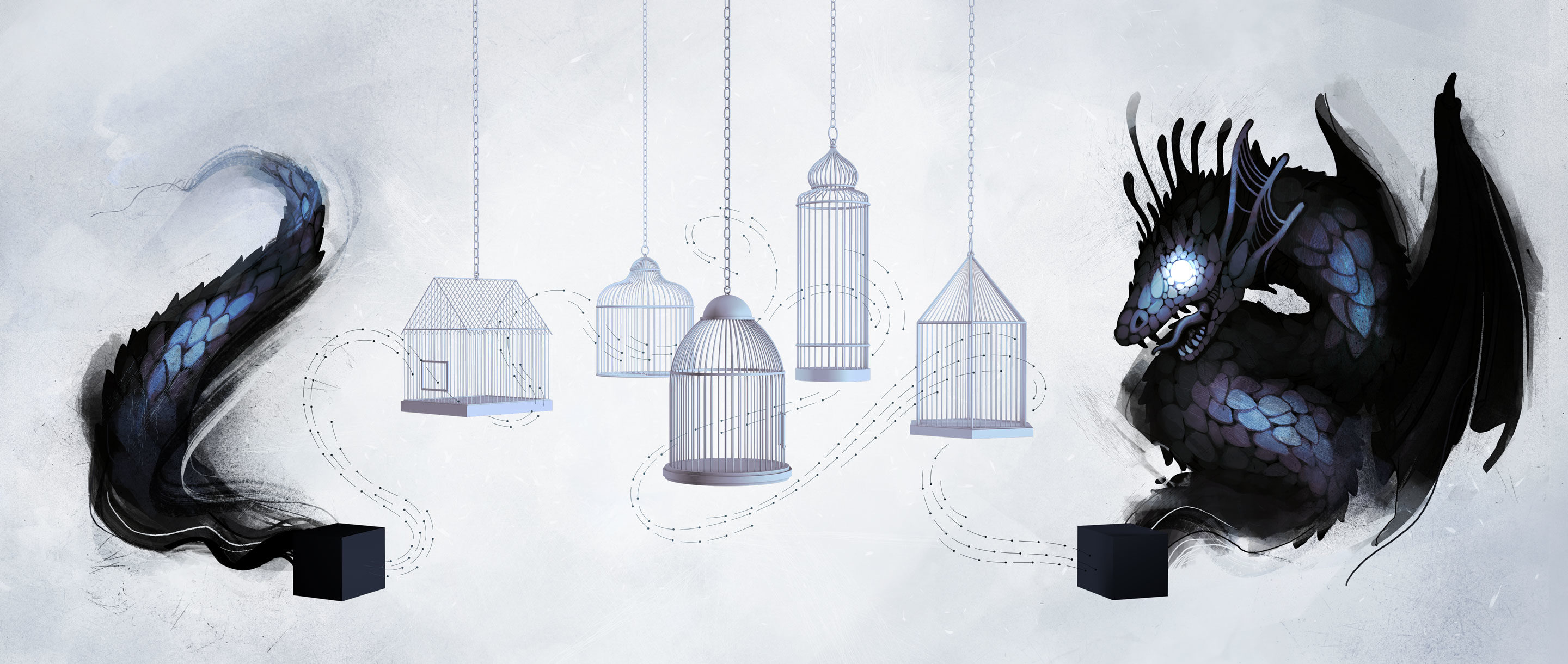
Theoretical physicist John Wheeler once used the phrase “a huge smoky dragon” to describe a particle of light flying from a source to a photon counter. “The dragon’s mouth is sharp where it bites the counter. The tail of the dragon is sharp, where the photon comes from, ”wrote Wheeler. In other words, the photon has a certain reality at the beginning and at the end of the path. But his state in the middle — the dragon’s body — is blurry. "We do not have the right to talk about what the dragon does, or what it looks like in the interval."
Wheeler supported the point of view on which elementary quantum phenomena cannot be called real until we make observation — a philosophical position called anti-realism.. He even came up with an experiment demonstrating that if you insist on realism — in which quantum objects, such as photons, always have certain intrinsic properties that look more like the classical concept of reality — then you have to accept that the future can influence on the past. Because of the absurdity of traveling into the past, the Wheeler experiment became an argument in favor of anti-realism at the quantum level.
But in May 2018, Rafael Chavez and colleagues from the International Institute of Physics found a loophole. They showed that the Wheeler experiment under certain assumptions can be explained using the classical model, which assigns intrinsic properties to a photon. They provided the dragon with a well-defined body, hidden from the mathematical formalism of standard quantum mechanics.
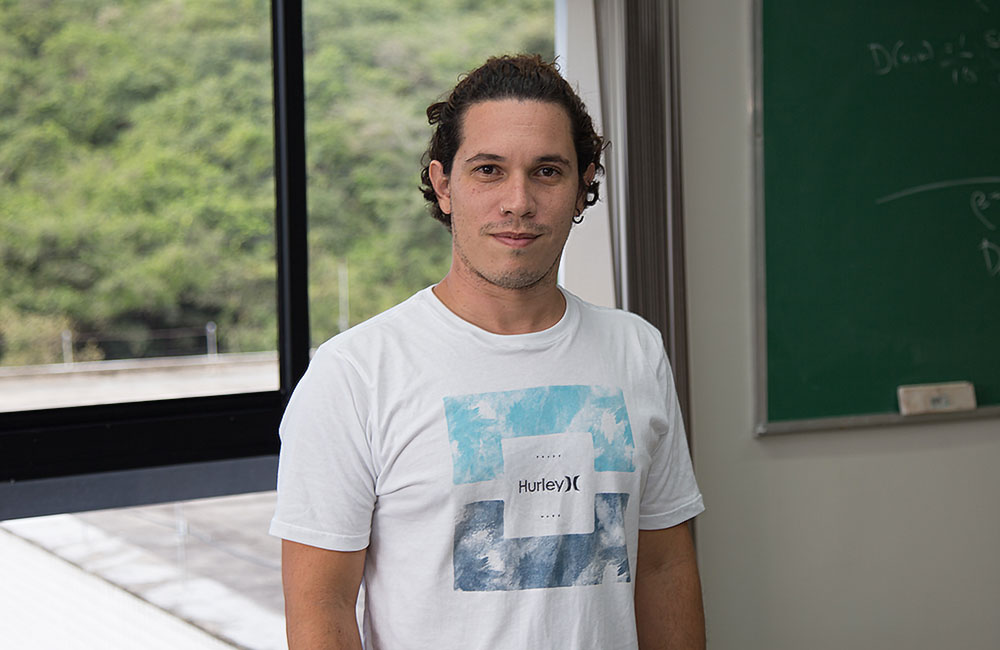
Rafael Chavez
The Chávez team proposed a modification of the Wheeler experiment to test loopholes. Three other teams hurried to conduct a modified experiment with unusual promptness. Their results, published in June, showed that the classical models that promote realism do not provide a meaningful interpretation of the results. Quantum mechanics may be strange, but it still remains the simplest explanation available.
Dragon trap
Wheeler invented his experiment in 1983 to emphasize one of the main conceptual mysteries of quantum mechanics: wave-wave duality . Quantum objects behave either as particles or as waves, but not at the same time and so and so. From this property of quantum mechanics, apparently, it follows that objects have no inner reality until they are observed at them. “Physicists have had to put up with dualism as an integral and strange feature of quantum theory for almost a hundred years,” said David Kaiser , a physicist and historian of science from the Massachusetts Institute of Technology. “This idea appeared before other typical strange features of quantum theory, such as the Heisenberg uncertainty principle and the Schrödinger cat".
This phenomenon is emphasized by the special case of the famous experiment with two slits called the Mach – Zehnder interferometer .
In the experiment, one photon is launched in the direction of a translucent mirror, or a beam splitter. A photon with equal probability either reflects, or passes through it - as a result, as a result it follows one of two paths. In this case, it will go either along path 1, or along path 2, and it will go either to detector D1 or D2, with equal probability. A photon behaves as an invisible whole, demonstrating its corpuscular nature.
But there is a nuance. At the intersection of paths 1 and 2, you can add another beam splitter that changes everything. In this case, quantum mechanics says that a photon seems to travel along two paths at the same time as a wave. These two waves converge together at the second beam splitter. The experiment can be put in such a way that the waves are combined constructively - peak to peak, failure to failure - only if they go towards detector D1. And the path to the D2 counter indicates destructive interference. In this situation, the photon can always be found in D1, and never in D2. In this case, the photon demonstrates its wave nature.
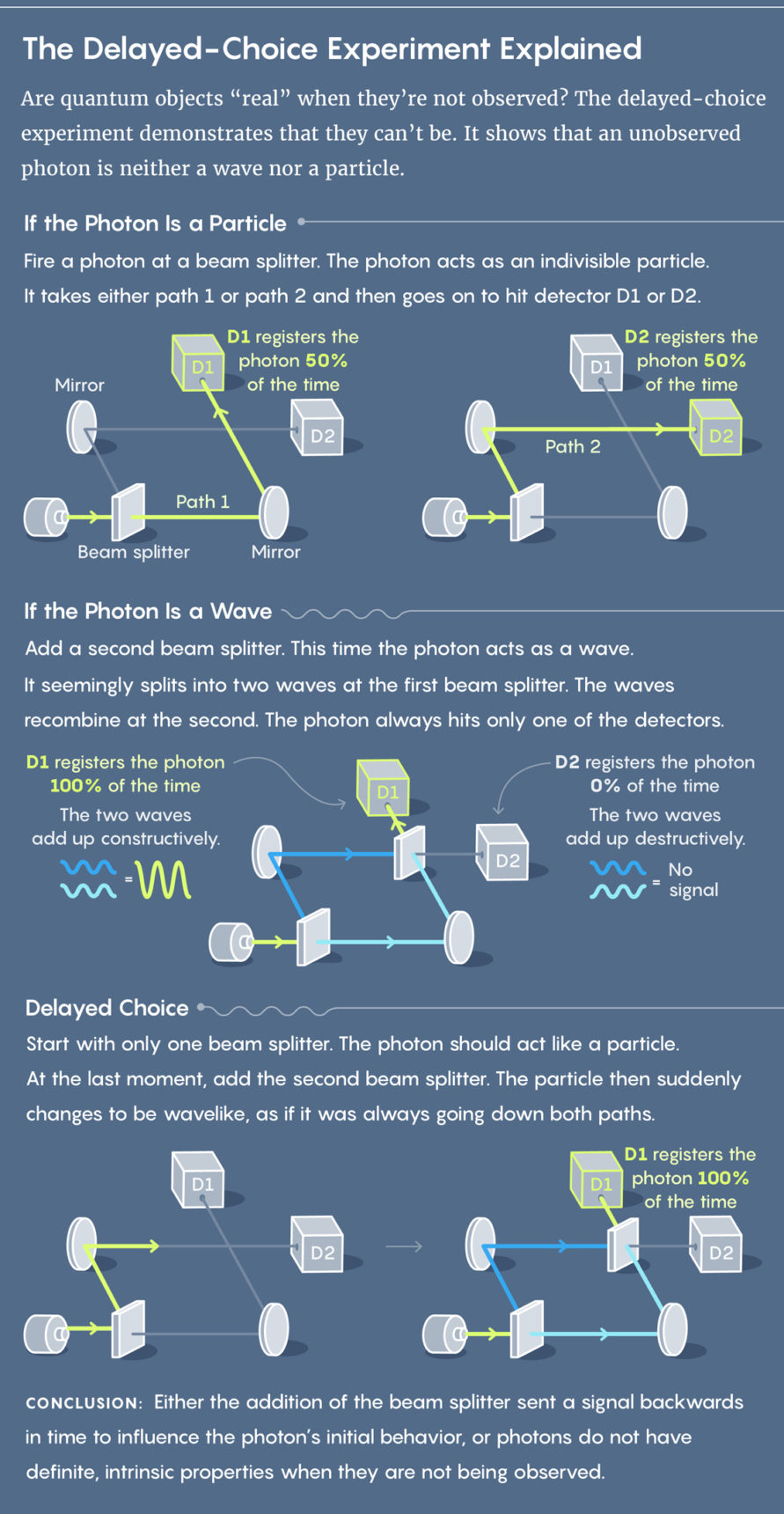
Above: a photon as a particle. Each of the detectors register a photon in 50% of cases.
In the middle: a photon like a wave. Photon registers only D1.
Below: Deferred selection. We start without a second beam splitter, and add it at the last moment. The photon, which at first behaved like a particle, suddenly begins to behave like a wave.
Conclusion: either the introduction of the second beam splitter sends the photon a signal into the past, or the photon has no intrinsic properties.
Wheeler's genius appeared in the question: what if we delay the choice of whether to add a second beam splitter? Suppose a photon enters the interferometer when there is no second beam splitter. He must behave like a particle. But you can add a second beam splitter to the very last nanosecond. The theory and experiment demonstrate that the photon, which previously had to behave like a particle, and get into either the D1 detector or D2, starts to behave like a wave, and only hits D1. To do this, he seems to have to go in two ways at the same time, and not along one of them. In the classical sense, everything happens as if the photon has gone back in time and changed its essence from particle to wave.
One of the ways to avoid such retro-causality [the influence of events from the future on the past] is to deny the photon's internal reality, and to assert that the photon becomes real only when measured. Then we have nothing to wind back.
Such anti-realism, which is often associated with the Copenhagen interpretation of quantum mechanics , received a theoretical blow after the release of Chavez’s work, at least in the context of this experiment. His team decided to explain the counterintuitive properties of quantum mechanics with the help of a new set of ideas, causal [cause-and-effect] modeling, whose popularity has grown in the last decade with the assistance of computer science expert Jude Pearland others. Causal modeling determines the causal relationship between the various elements of the experiment. Often, when studying related events — let's call them A and B — we cannot definitely say that A is the cause of B, or that B is the cause of A, there is a possibility that the cause of both of them is the unforeseen or “hidden” event of B. In such cases, causal modeling can help reveal this. V.
Chavez and his colleagues, Gabriela Lemos and Jacques Pienard, concentrated on the postponed Wheeler experiment, expecting failures in the search for a model with a hidden process, both giving the photon an internal reality and explaining its behavior without any retrocause. They believed that they would prove that the experiment with a deferred choice was “extremely counterintuitive, in the sense that no causal model could explain it,” said Chavez.
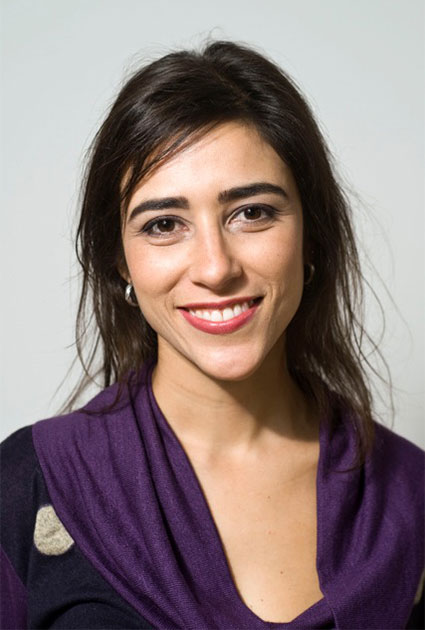
Gabriela Lemos
But they were in for a surprise. The task was quite simple. They began by assuming that the photon, immediately after passing through the first beam splitter, has an internal state defined by a “hidden variable”. In this context, the hidden variable is something that is not in standard quantum mechanics, but which in some way affects the behavior of the photon. Then the experimenter decided to add or remove the second beam splitter. Causal modeling prohibiting travel into the past ensures that the choice of the experimenter does not affect the past internal state of the photon.
Given the hidden variable supporting realism, the team showed that it is possible to write down the rules using the value of the variable and the presence or absence of a second beam splitter to conduct a photon to D1 or D2 in a manner that repeats the predictions of quantum mechanics. They got a classic, causal, realistic explanation. They found a new loophole.
This surprised several physicists, said Tim Burns , a specialist in quantum theoretical physics from New York University in Shanghai. “What people didn’t appreciate is the fact that an experiment of this kind allows for a classical explanation that ideally repeats the results of an experiment,” said Burns. “You can create a theory with a hidden variable, without any quantum mechanics.”
“It was a zero step,” said Chavez. The next step is to figure out how to change the Wheeler experiment so that a distinction can be made between the classical theory of a hidden variable and quantum mechanics.
In the modified experiment, the Mach – Zehnder interferometer remained unchanged; the second beam splitter is always present. Instead, the role of experimental adjustments that the researcher may change at will is played by two phase shifts — one at the beginning of the experiment, the other at the end.
The cumulative effect of two phase shifts changes the relative length of the paths. This changes the pattern of interference, and with it the expected wave or particle behavior of the photon. For example, the value of the first phase shift may be such that the photon behaves like a particle inside the interferometer, and the second shift may cause it to behave like a wave. Researchers needed to tune the second shift after the first.
With this formulation of the experiment, Chavez’s team came up with a way to distinguish between the classical causal model and quantum mechanics. Suppose the first phase transition can accept one of the three variables, and the second one of the two. It turns out six possible experiments. And here the predictions of the classical model of hidden variables and standard quantum mechanics are different. Then the scientists made up the formula. The formula receives the input probabilities calculated on the basis of the number of times that a photon arrives at a particular detector (based on the formulation with two phase transitions). If the formula is zero, then the classic causal model is able to explain statistics. But if the equation produces a number greater than zero, then, due to certain restrictions imposed on hidden variables,
Chavez teamed up with Fabio Sciarino, a specialist in quantum physics from Sapienza - University of Rome, and his colleagues to test the inequality. At the same time, two Chinese teams - one under the leadership of Jean-Wei Pan, an experimental physicist from the Chinese Science and Technology University in Hefei, and the second - under the guidance of Guan-Kan Guo, from the same university, conducted their experiments.
Each team implemented the scheme in a slightly different way. Guo's group followed a simple version using a real Mach-Zehnder interferometer. “This experiment, in my opinion, is closest to Wheeler’s original proposal,” said Howard Weisman, a theoretical physicist at Griffith University, who did not participate in the experiments.
All three teams showed that the result of calculating the formula exceeds zero with irrefutable statistical significance. They excluded those classical causal models that could explain the Wheeler experiment with a deferred choice. Loophole closed. “Our experiment was saved by Wheeler’s famous thought experiment,” said Pan.
Those hidden variables that still remain
Kaiser was impressed with the "elegant" theoretical work of Chavez and the subsequent experiments. “The fact that clear signs of inequality are found in each of the experiments is convincing evidence that“ classical ”models of such systems do not really describe the real scheme of the world’s work, while quantum-mechanical predictions perfectly coincide with the latest results” , - he said.
The formula is used with certain assumptions. One of the largest - the classic hidden variable used in the causal model can take one of two values, encoded in one bit of information. Chavez thinks this is reasonable, since a quantum system - a photon - can also encode only one bit of information (it goes either into one arm of the interferometer, or into the other). “It is natural to say that the model of hidden variables should also be two-dimensional,” said Chavez.
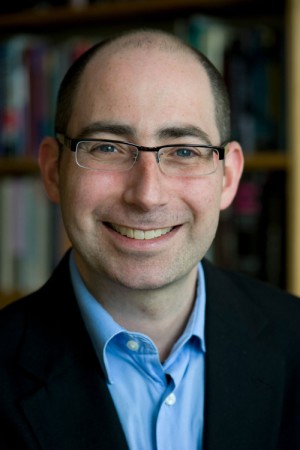
David Kaiser
But a hidden variable with an additional ability to carry information can restore the causal model's ability to explain the statistics observed in a modified experiment with a deferred selection.
In addition, these experiments do not refute the most popular theory of the hidden variable. The de Broglie – Bohm theory , a deterministic and realistic alternative to standard quantum mechanics, is quite capable of explaining an experiment with a delayed choice. According to this theory, particles always have a location (which are hidden variables), and, therefore, an objective reality, but at the same time they are guided by a wave. Therefore, the reality of both wave and corpuscular. The wave travels in both ways, and the particle - in one of two ways. The presence or absence of a second beam splitter affects the wave that conducts the particle to the detectors - and this result coincides with standard quantum mechanics.
For Weisman, the controversy over the confrontation between the Copenhagen interpretation and the theory of de Broglie-Bom is far from complete. “In the Copenhagen interpretation, no strange time reversal occurs precisely because we have no right to talk about the past of the photon,” he wrote in an e-mail. There is a reality independent of our knowledge in the interpretation of de Broglie-Bohm, but there is no problem, since there is no time reversal - but there is a unique causal (forward-looking) description. ”
Kaiser, praising the attempts made, wants to move on. In current experiments, the choice of whether or not to add a second phase shift or a second beam splitter was made by a quantum random number generator. But in this experiment, quantum mechanics itself is checked, because of which it has a taste of circular dependence. “It would be nice to check whether the results of the experiment remain consistent even with such schemes, which are based on completely different sources of chance,” said Kaiser.
To do this, Kaiser and his colleagues created such a source of accidents using photons coming from distant quasars, many of which traveled more than half of the [observable] Universe. Photons collected meter telescope observatory Table Mountainin California. If the photon's wavelength does not exceed a certain threshold, the random number generator produces 0, otherwise 1. In principle, this bit can be used to randomly select experimental conditions. If the results continue to support Wheeler’s initial statement, then “this will give us another reason to say that wave-wave duality is not explained in classical physics,” said Kaiser. - The range of conceptual alternatives to quantum physics has again decreased, and has already been cornered. That is what we are striving for. ”
In the meantime, the dragon’s body, which had appeared in sight for several short weeks, again became smoky and unclear.
More articles on the popular science topic are available at golovanov.net . Subscribe to updates by e-mail or RSS. Articles are also duplicated on the Yandex.DZen channel .
